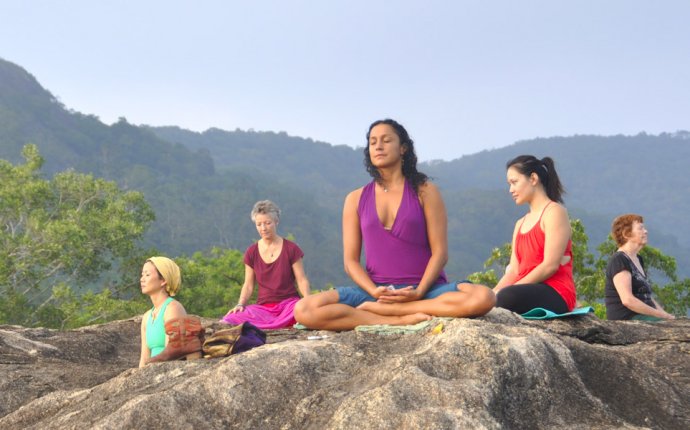
Ayurveda Meditation

The key to true mind-body balance? Understanding your body’s natural needs—how to eat, cook, cleanse, and heal—through each season. In our upcoming online course Ayurveda 101, Larissa Hall Carlson, former dean of Kripalu's School of Ayurveda, and John Douillard, founder of LifeSpa.com and best-selling author, demystify yoga's elemental sister science. Sign up now!
The new year is the perfect time for a fresh start—and meditation can help, no matter what your dosha is, says Larissa Hall Carlson, former dean of Kripalu's School of Ayurveda and co-leader of Yoga Journal's new course, Ayurveda 101. "Meditation is important for all the doshas, all year long, but it's especially important this time of year as we re-focus goals and set intentions, " she says. While the following three meditations can be done by anyone at any time of year, each one is intended to balance the qualities of each dosha, whether you're looking to balance your personal constitution or the qualities of the current season. Here, Carlson shares her favorite New Year's meditation for each dosha.
Vata: Japa Meditation
Establishing rhythm is one of the most effective ways to stabilize an overactive or scattered mind. When the light, subtle, and mobile qualities of vata dosha increase excessively during the cold and windy winter season, excess vata often manifests as mental restlessness, stress, fear, or anxiety. Luckily, the rhythmic repetition of mantra during japa meditation slows down a racing mind and enhances focus. I like using mala beads to track the mantra repetitions, as mala beads have some weight, and that tangible anchor is good for grounding excess vata and staying on point. Don't have mala beads? Not to worry-just repeat the mantra for several minutes, until you feel quiet and relaxed.
How to Practice Japa Meditation
First, choose a mantra that resonates with you. The following mantra to settle the mind is especially popular for yogis in the new year: Yogash Chitta Vritti Nirodhah (Yoga ceases the fluctuations of the mind). Grab your favorite set of mala beads and sit down comfortably. Cover up with a warm blanket. Take the mala into the right hand, draping it over the middle, ring, and pinky fingers (relax the pointer finger—it doesn't touch the mala). Use the thumb to move the mala beads, one bead at a time. Close your eyes. Repeat the mantra once for each bead, using a soothing rhythm. Do this 108 times, or until the mind gets focused and steady.
Kapha: Walking Meditation
Ensuring good movement and circulation is important for preventing the heavy, thick, wet qualities of kapha dosha from accumulating during the rainy spring kapha season (or if you've been eating too many holiday treats this winter!) and manifesting as mental sluggishness, lethargy, foggy thinking, and lack of motivation. You can reduce excess kapha by using meditation techniques that have sharpness, lightness, and mobility. One of my favorite meditations for kapha is walking mediation, as it keeps the body moving while enhancing focus and mental clarity. Clear out the cobwebs and get moving this new year!














